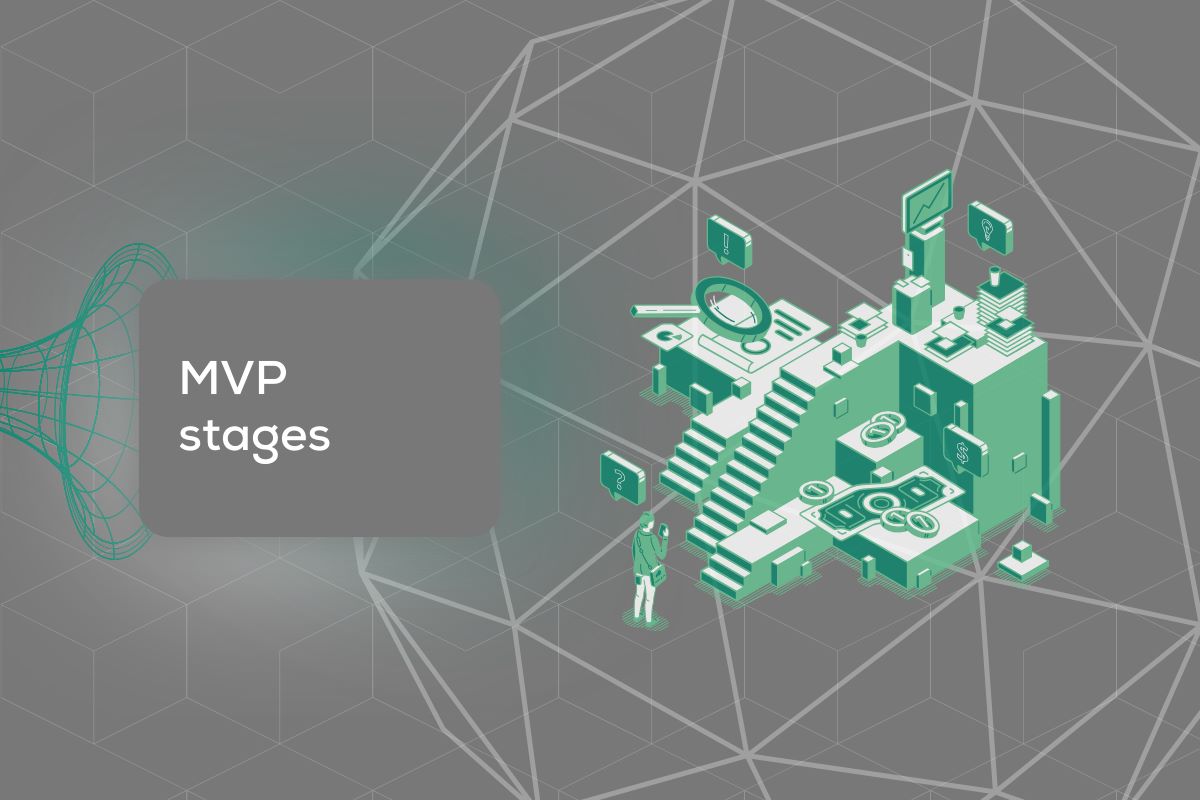If you have an innovative idea that you want to transform into a great product, you’re likely eager to make it a reality soon. But rushing a product rarely results in anything good – first, you need to build an MVP. Let’s go over all the MVP stages that will help you transform your idea into an actual product.
What Is an MVP in Software Development?
What is an MVP? This abbreviation stands for a minimum viable product, a concept in software development where the product is created with minimum features to test its viability before further development and investment in the project. MVP offers guidelines on how to proceed with developing the product, and it’s commonly created before the launch of a full product. This practice is quite popular, and some of the major platforms and apps were originally created as MVPs – famous examples of MVPs include Facebook, Instagram, Dropbox, Airbnb, and even Amazon.
The Purpose and Benefits of MVPs in Software Development
Why build an MVP before a full product? When you have an intriguing idea that you want to transform into a product, you don’t know what the user response will be and whether your product will find its place in the market with numerous competitors. MVP can provide you with user feedback before you invest too much money into something with an uncertain future. With a minimum viable product, you get several benefits:
- You can see if your business idea is viable,
- You get to see how your target audience reacts to the product,
- You can launch an MVP quickly and with little resources,
- The feedback you receive helps you with future improvements,
- MVP can reduce time-to-market for the following features you wish to implement.
MVP Stages Overview
As you can see, there are many benefits of MVPs in software development. With that out of the way, let’s take a closer look at each of the steps you will need to go through in order to get to a point where your product is viable. While there is no single correct way to organize an MVP’s development cycle, the process can be boiled down to four stages. These include:
- Stage 1 – Defining the idea behind the product,
- Stage 2 – Choosing a target audience,
- Stage 3 – Deciding what will be the crucial features,
- Stage 4 – Building a minimum viable product.
Stage 1 – Defining the Idea on Which You’ll Base a Product
There are several product stages of an MVP, but the process usually starts with developing an idea. A successful business idea is one that addresses a gap in the market. In other words, it should solve a problem that a large group of users have. Your idea has to be innovative and unique – it should provide users with something they need, but your competition can’t give them. Of course, you must keep in mind that simply having a nice little idea isn’t enough. It’s just the start of the long road – you need to work on the concept you’ve come up with and polish it to perfection.

Stage 2 – Choosing a Target Audience
To sell something, you need to know who would be interested in the type of product you offer – who’s your target audience? Determining this will be of utmost importance. While many wish to appeal to broad audiences, the reality is that it won’t be manageable in the early stages of creating a product. You need to focus on a certain group of people and shape your marketing strategies based on what would fit them. Consider factors such as age, gender, income, occupation, lifestyle, and place of residence.
Don’t Forget to Do Market Research During This MVP Stage
Market research is an integral step in creating a successful MVP. It will help you understand the level of demand for the category of a product that you offer. What’s the size of the market that your product appeals to? Furthermore, who will be your competition? Do research on them, and try to find pain points that they haven’t solved – will your product be able to top theirs by solving these issues?
Stage 3 – Deciding What Will Be the Crucial Features to Incorporate Into an MVP
The next stage focuses on selecting the key features that the first version of your product will have. When building an MVP, you will need to choose only the most important features – remember, we’re talking about the minimum product. The general idea is to present the major feature that was the core of your business idea – and a few others that you consider integral for the product to be usable. An MVP will help you gain insights into how these features resonate with users so that you can continue to develop less crucial features and improve your product.

Stage 4 – Building a Minimum Viable Product
Once you go through the stages above, it’s finally time to build an MVP. This shouldn’t be too complicated – the great thing about an MVP is that it doesn’t have to be perfect. It just has to be built quickly and with all the essential features. It’s often recommended to take a lean approach when it comes to MVPs – put out the product, collect the feedback, and use it to make changes and improve the product. Remember, nothing is perfect at the first launch!
After This Step, You Are Ready to Test the Minimum Viable Product
Now that you have a usable product – test it with actual users. Focus on reaching your target audience and encourage them to give feedback – don’t forget that you’ll need to develop a mechanism for receiving feedback. When the first impressions come in, you can use them to begin improving the product. You likely won’t be able to focus on everything at once – so tackle the most pressing issues first.
Want Help With Creating an MVP? Reach Out to Juratech Solutions for Development Services
Creating an MVP isn’t the easiest thing in the world – you’ll need help if you want to save valuable time and get a quality, functional product. That’s where an experienced MVP development company comes to the scene – Juratech Solutions can help with all your software development needs. From mobile app development services to rapid prototyping software development, we can do it all. Contact us to learn more about what we do, and let’s set on the exciting journey of creating something new together!







